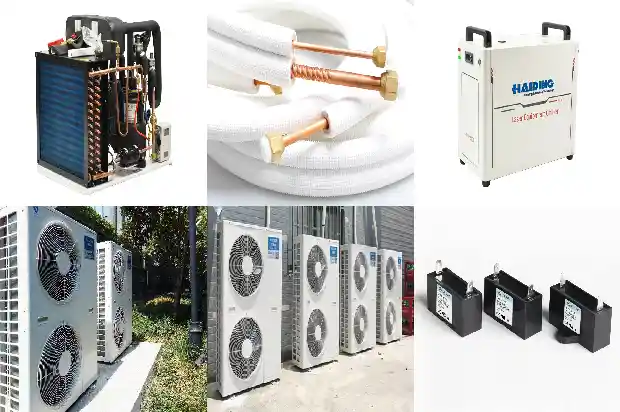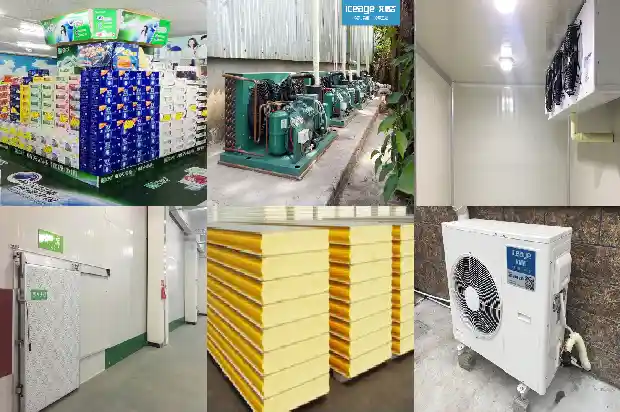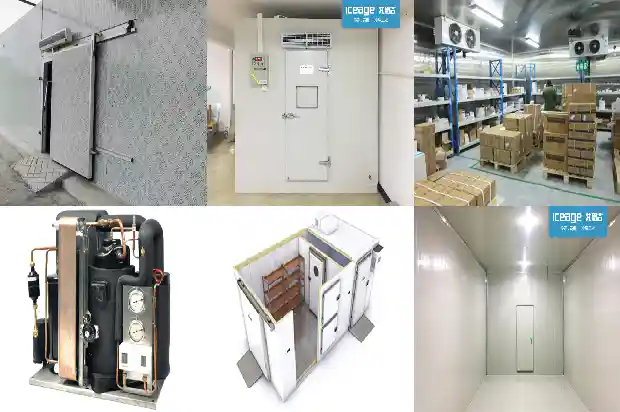These Are the Nine Reasons for the Low-pressure Fault! Haven't You Mastered Them Yet?
2025-03-09
The common reasons for the low-pressure fault of the air conditioner are as follows:
- The copper pipe of the air conditioner's refrigeration system is too long.

- The filter screen of the indoor unit of the air conditioner is dirty and blocked.
- The drying filter in the air conditioner's refrigeration system is dirty and blocked, or the copper pipe is blocked by oil.
- The low-pressure protector in the air conditioner's refrigeration system malfunctions.
- The solenoid valve in the air conditioner's refrigeration system cannot be opened.
- The expansion valve in the air conditioner's refrigeration system malfunctions.
- The refrigerant in the air conditioner's refrigeration system leaks.
- The condenser of the air conditioner's refrigeration system has too good a heat dissipation effect.
- The liquid return pipeline in the air conditioner's refrigeration system is flattened, resulting in unsmooth liquid return.
In the final analysis, we can analyze it from the following two aspects:
01) Insufficient refrigerant in the evaporator;
02) Incomplete evaporation of the refrigerant in the evaporator;
01) Insufficient refrigerant in the evaporator;
02) Incomplete evaporation of the refrigerant in the evaporator;
The following is an analysis of the low-pressure alarm of the air conditioner, hoping to be helpful to you:
- The copper pipe of the air conditioner's refrigeration system is too long:
During the debugging process, the low-pressure alarm time set for some air conditioners at the factory is relatively short (usually 120 seconds). When the copper pipe of the air conditioner being debugged is long, it will prolong the time for the refrigerant to return to the evaporator, resulting in a low-pressure alarm fault.
Solution: The low-pressure alarm time can be increased to 180 seconds. In an environment with changing weather, the low-pressure alarm time also needs to be appropriately increased. - The filter screen of the indoor unit of the air conditioner is dirty and blocked:
The air circulation will adsorb the dust in the environment onto the surface of the air conditioner filter screen. Some users will ignore this problem. Day after day, the air conditioner filter becomes too dirty, and the evaporator freezes, resulting in a low-pressure alarm fault of the air conditioner.
Solution: Replace the filter screen of the indoor unit of the air conditioner. - The drying filter is dirty and blocked or the copper pipe is blocked by oil:
When connecting the copper pipes, welding is required. Some copper slag cannot be completely cleaned just by blowing out the dirt. The dirt in the refrigeration system will accumulate in the drying filter. During the operation of the air conditioner's refrigeration system, there will be a temperature difference between the two ends of this filter.
Solution: In the case where the filter is extremely dirty, the refrigeration system needs to be blown out or cleaned again. The general treatment method is to replace the drying filter with the same model and specification. - The low-pressure protector in the air conditioner's refrigeration system malfunctions:
We install a pressure gauge to detect the air conditioner's refrigeration system. When the pressure is normal, use a multimeter to measure the circuit of the low-pressure protector, or short-circuit the low-pressure protector and start the compressor to run. If the refrigeration cycle is normal, it indicates that the low-pressure protector is faulty.
Solution: Replace the low-pressure protector with the same specification and model. - The solenoid valve in the air conditioner's refrigeration system cannot be opened:
When the refrigeration system is running, the sound of the solenoid valve opening can be heard. If the solenoid valve does not open, the low-pressure will gradually decrease until a low-pressure alarm occurs. Reset the alarm on the air conditioner control panel, and the low-pressure will not rise. At this time, measure the solenoid valve coil. If there is a resistance value, it indicates normal; if it is infinite, it indicates that the coil has been burned out.
Solution: Replace the solenoid valve coil with the same specification and model. - The expansion valve in the air conditioner's refrigeration system malfunctions:
If the expansion valve malfunctions, when the refrigeration system is running, the low-pressure cannot rise, the high-pressure cannot rise either, and adding refrigerant will not make the low-pressure rise.
Solution: First, adjust the opening degree of the expansion valve. If there is still no effect, replace the expansion valve with the same specification and model (Note: It is necessary to check whether the expansion valve is dirty blocked or ice blocked). - The refrigerant in the air conditioner's refrigeration system leaks:
First, install a pressure gauge to detect the air conditioner's refrigeration system. If there is no pressure indication as soon as the gauge is installed, it means that the refrigerant in the refrigeration system has leaked out completely. If there is still pressure at this time, the refrigeration system can barely run. When adding refrigerant, if the pressure rises immediately, it also indicates a refrigerant leak.
Solution: First, detect all positions of the refrigeration system to check for any signs of oil leakage. Focus on checking the oil leakage positions with detergent. If necessary, conduct section-by-section pressure holding tests on the refrigeration system and then check again. After finding the leakage point, weld to repair the leak and debug the refrigeration system again. - The condenser of the air conditioner's refrigeration system has too good a heat dissipation effect:
This mainly occurs in situations with a low ambient temperature, such as in winter. We can often see that in winter, some cooling tower equipment needs to turn off the fans because the condensing pressure is too low.
Solution: Increase the starting pressure of the air conditioner; or modify the outdoor fan and change it to a speed-regulating fan, which can better solve the problem. - The liquid return pipeline in the air conditioner's refrigeration system is flattened, resulting in unsmooth liquid return:
This situation occurs with a relatively low probability. It is necessary to check the copper pipe to find the flattened position.
Solution: Find the flattened position of the copper pipe and replace the copper pipe of the same specification.
The low-pressure alarm of the air conditioner is one of the most common problems in maintenance work, and the reasons for its occurrence are also multi-faceted. Making a reasonable judgment, the above are some of my personal insights on the judgment of low-pressure alarms in my work, for reference only. I hope it will be helpful to you.
Related Articles
- Is the Compressor of the Cold Storage Unit Overheating? Find the Reasons Here!
- A Detailed Analysis of the Nine Reasons for the Low Pressure in the Refrigeration System!
- Reasons for Compressor Oil Deterioration and Oil - adding Operations
- What Are the Common Reasons for Difficulties in Cooling a Cold Storage?
- Analysis of Seven Reasons for Ice Formation in Computer Room Air Conditioners
- Reasons for Frost Formation in Cold Storage and Defrosting Methods
- What Are the Reasons for Insufficient Air Output of Screw Air Compressors?
- Reasons for Pump Body Failures in Cold Storage Compressors
- What are the reasons for the inactivity of the automotive air conditioning compressor? What are the common faults?
- What are the reasons for the frequent start-up and tripping of the refrigerated air dryer in the cold storage?
- Reasons and Solutions for High and Low Condensing Pressure in Air-cooled and Water-cooled Systems
- 15 Reasons for Excessive Temperature Rise of Motors
- Reasons for Installing Thermal Insulation Layers in Cold Storages
- What are the reasons for the poor oil return of screw compressors?
- 7 Reasons for Low Air Pressure in Cold Water Unit
- Reasons for Higher Cost of Controlled Atmosphere Cold Storage than Ordinary Cold Storage
- Five potential reasons for the deteriorating performance of car air conditioning
- Nine common reasons for compressor damage
